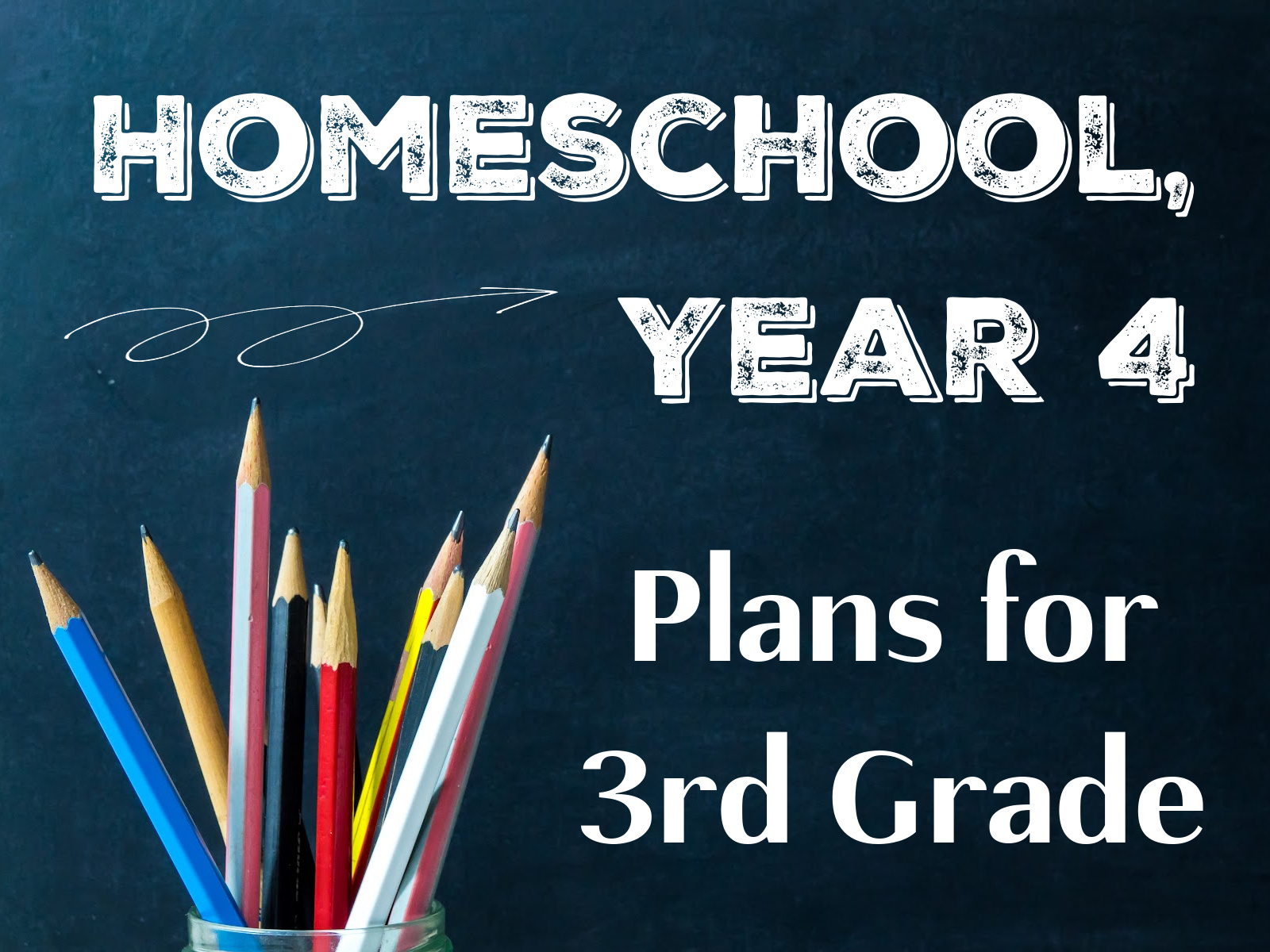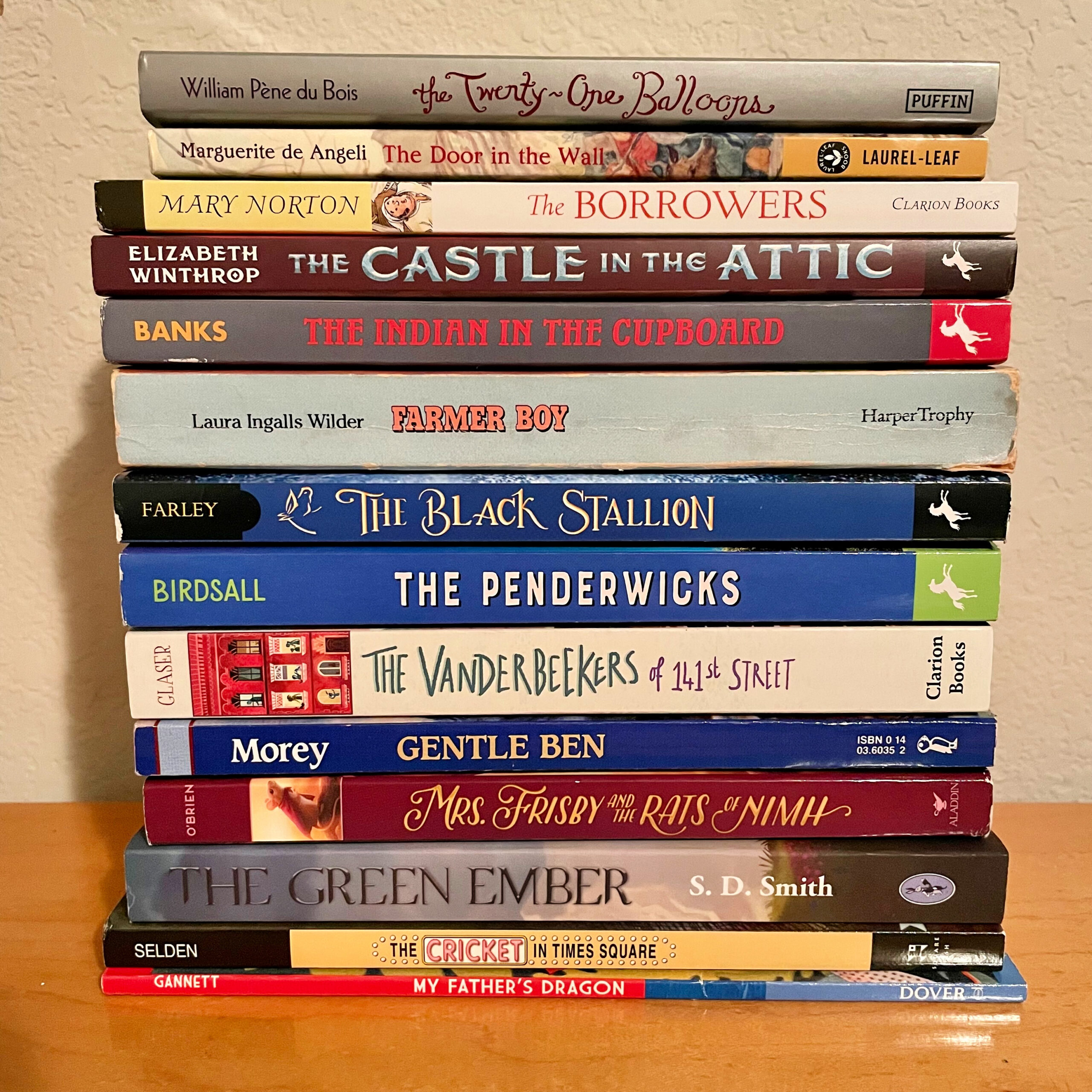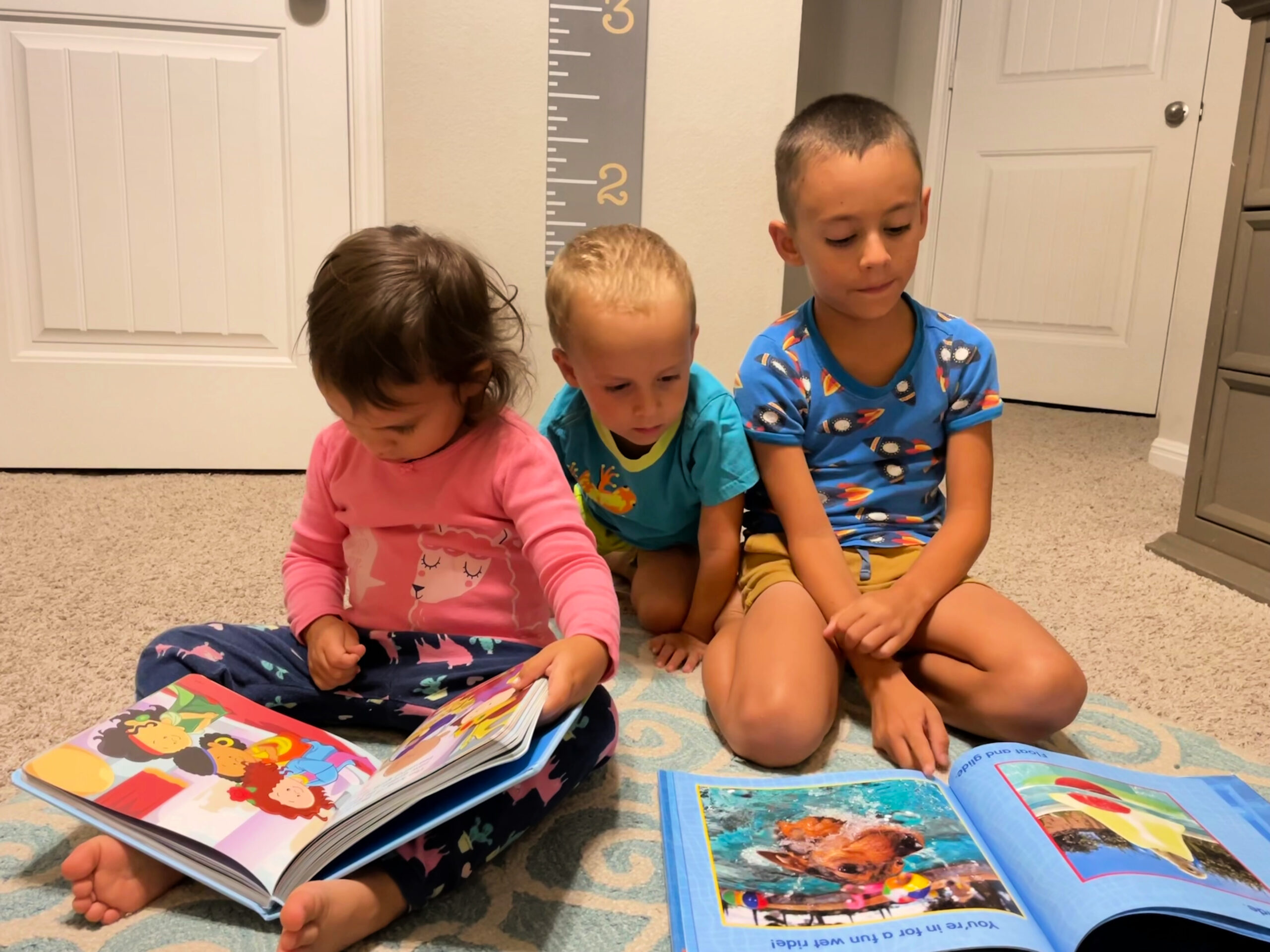It’s been a lovely summer, but we’re ready to get back to (school)work, and Charleston and I will be starting THIRD grade tomorrow! Which means that we are entering into our fourth full year of homeschooling—that is just wild to me! Although this hardly makes us veteran homeschoolers, I’ve learned a lot in our last three years. We’ve settled into curriculum that we love by getting a better understanding of what we truly want and need out of our materials. We have also worked through many kinks in our scheduling, though that is an always-evolving aspect of homeschooling as our family rhythms change.
Mostly, I have come to a greater understanding and peace over our choice to homeschool our kids. Our “why” has been solidified and I feel we have moved from being “a family who homeschools” to a genuine “homeschooling family.” We may alter course as the kids get older and circumstances change. But in this season, I feel confident that this is truly what is best for our family and feel so honored and blessed that this is a schooling choice we are able to make.
It’s become an annual blogging tradition for me to kick off each school year by sharing our plans for the year, and I am happy to be doing that today. As the principal/teacher/curriculum coordinator of our family’s school, I’m always interested in what resources other families are using and how they structure their days, so I know that posts like these are helpful (or at the very least interesting) for other homeschoolers to read. Much to my surprise, I have been told by many non-homeschoolers how much they also enjoy this annual glimpse into how our family spends our days, and I’m happy to share!
We don’t begin formal schooling with our kids until Kindergarten, so I am savoring these last two years of teaching just ONE child. (It will get a lot more complicated when I move from one full-time student to three!) This year I will continue to work with Kali and Sully on basic preschool skills, and they will join us for some of our family-style learning, but I have no official curriculum for them. Instead, I’ve been able to focus my energy on designing Charleston’s Third Grade year, and I’m pretty excited about it! In terms of curriculum and schedule, this year’s plans are pretty similar to what we did for Second Grade, with some tweaks.

**One thing to note before we get started is that in Texas, we have total freedom with our schooling: I do not have to report our subjects or time to official school authorities and I have total flexibility with our curriculum choices. Every state is different, and fortunately for us, ours happens to be the most homeschool-friendly spot in the US.**
All right, let’s do this! First up is a rundown of the curriculum and other tools we are using for each subject. Then we will get into the specifics of how each of those subjects fits into our school day.
THE MATERIALS
MISCELLANEOUS MATERIALS: Simple Spiral Notebooks (one each for Science, Bible, and Literature; Kali and Sully will also each get their own notebook, used for all subjects); Teacher Planner (where I record all of our lessons); Index Card Rings (for Scripture Memory)
LANGUAGE ARTS (4 Days/Week): The Good and the Beautiful Level 3 Language Arts Course Set We have positively fallen in love with all things The Good and the Beautiful curriculum. It is Christian-based, with a focus on God, nature, character, and quality literature. The parent-led Language Arts lessons offer comprehensive instruction in phonics, spelling, reading, writing, poetry memorization, and grammar, and the curriculum even incorporates geography and art appreciation into the lessons. We have found the grab-and-go curriculum to be engaging and appropriately challenging, with just the right balance of parental instruction and independent practice.
MATH (4 Days/Week): The Good and the Beautiful Math 3 We finished the first half of this level-3 curriculum last year and plan to move on to Math 4 once we have completed this level. As with the language arts materials from The Good and the Beautiful, the math curriculum is engaging and extremely effective for teaching foundational math skills through a mix of story, games, direct teaching, and practice. The curriculum comes with an adorable Math Box containing all extra materials (ruler, dice, magnetic pattern blocks, etc) needed for the lessons.
HANDWRITING (Daily): The Good and the Beautiful Handwriting Level 3 Workbook Charleston is excited to be learning cursive this year! This workbook reviews printed letter formation and introduces cursive writing in pages that integrate poetry, Bible verses, spelling practice, and art skills.
HISTORY (4 Days/Week): The Biblio Plan, Year One: Ancient Days I learned about this curriculum at the homeschool convention I attended, and it is exactly what I was looking for—a comprehensive curriculum, written from a Christian perspective, with a text book and supplemental materials. The four-year curriculum covers World History, Biblical History, and Geography beginning with Creation and ending in the Modern era. (This year we will just cover Creation through the fall of Rome; future years follow other periods in History). I purchased the full Year 1 Bundle for Littles but to be honest, the number of materials is a little overwhelming so we will just be focusing on reading from the textbook, discussing questions from the teacher’s guide, adding to the timeline, and possibly coloring the corresponding coloring pages. The Craft Book and Lesson Plans included in the bundle offer amazing ideas for supplemental projects, book and film recommendations, and cross-curricular assignments; we may dip into those as time allows.
SCIENCE (1 Day/Week): The Good and the Beautiful Little Hearts and Hands Science: Wind and Waves Course Set The kids and I all enjoyed the Little and Hearts and Hands Fields and Flowers curriculum we used for second grade and are looking forward to this newest addition to the series. Lessons are taught through a combination of audio narrations, readings from the accompanying illustrated storybook, and experiments. The lessons are below grade-level for Charleston, but I’ve chosen to go with this curriculum because I like that we can do these as a whole family; I can supplement for Charleston as needed (and I don’t worry too much about teaching him Science since he also gets Science at his enrichment program). After completing the lesson, the kids will respond in their Science Notebooks—Kali and Sully will draw a picture illustrating what they have learned, and Charleston will summarize his take-aways in writing.
SCRIPTURE MEMORY (Daily): Charleston’s Bible (a CSB study Bible for kids) has a list of recommended verses to memorize. We will be working through Scriptures from this list, one verse per week. Charleston will copy the verse onto an index card to add to a Bible Notecard ring, with a goal of having at least thirty verses memorized by the end of the school year.
THEOLOGY/WORLD VIEW (2 Days/Week): Early Childhood Biblical World View Curriculum This video-based curriculum helps families explore the concepts of truth, God, life, humans, and morality from a Christian worldview. We started this curriculum during the summer and have loved the simple presentation of complex (but hugely important) ideas. When we are done with this curriculum in a few weeks, we will move on to the Attributes of God curriculum, designed to give kids the skills they need to navigate today’s culture. After watching each lesson video, the kids will respond with an illustration or written summary of what they have learned. (This curriculum is different from our regular Bible reading, which isn’t part of our official school but is incorporated into our daily rhythms. Charleston is reading through his kids study Bible [Genesis-Revelation] with Luke at bedtime, and I read a nightly story from a Children’s Story Bible with the twins.)
PIANO (3 Days/Week): Charleston is making amazing progress with lessons through the Simply Piano app. He does these entirely on his own for a minimum of 15 minutes per lesson.
INDEPENDENT READING (Daily): I give Charleston pretty free rein with his independent reading. I help him find magazines or books that are thematically appropriate and at his reading level, but I put few restrictions on his choices. The only requirement is that he reads a total of one hour each day; some of this is done in the car, the rest during his independent work time.
LITERATURE (Daily): I pre-selected all of our family novels for the year (all fourteen books are stacked up in the picture below!). I am letting Charleston choose the order of our books, and he’s decided to start the year with The Twenty-One Balloons. We will read aloud from these novels as a family during our morning school time, and during his independent work time Charleston will respond to what we’ve read in his Literature Notebook, choosing one or more prompts from a laminated list of fifty different reading responses. (I had a little too much fun compiling this list, and I’m happy to share if you’re interested.) Charleston will have the option of responding in writing, pictures, lists, charts, or any other format that reflects he has understood and is able to interact with the content. This is our first time having such an open-ended literature curriculum, but I have a feeling he will thrive with the lack of constraints. At the end of each book, we will add to his Reading Journal and he will give an oral book report presentation (on video to send to family).

In addition to our family school time, we do some outsourcing: on Tuesdays, Charleston attends a full-day Christian enrichment program where he studies Science, PE, Art, Music, and Spanish (and gets a fun once-a-week experience of attending “real school” complete with school supplies, recess time, and FRIENDS. They even have a school yearbook!). On Thursday afternoons, Charleston participates in a homeschool sports program where he learns a variety of sports and other outdoor games. And this year, for the first time, we’ve also joined Trail Life, a Christian alternative to Boy Scouts: Charleston and Luke will attend weekly meetings together and participate in monthly camping trips. I love that they are doing this and can’t wait to see how it goes!
THE SCHOOL SCHEDULE
6:00—Kids wake up, get dressed, and ease into the day. Everyone is at the kitchen table ready to start the day by 6:30 sharp.
6:30-6:40—Morning Routine We begin with prayer time, then recite the Pledge of Allegiance and Apostle’s Creed. We also use this time to discuss our plans and goals for the day.
6:40-6:50—Scripture Memory On Monday of each week we locate and read the week’s verse in Charleston’s Bible. (Charleston will copy the verse onto a notecard to add to his key ring during his independent work time.) On Tuesday, Wednesday, and Thursday we practice memorizing the verse through songs, games, recitation, and movements. On Friday we make a video of Charleston (and possibly Kali and Sully) reciting the verse from memory.
6:50-7:10—Literature/Handwriting Charleston works on a page in his handwriting workbook and the twins color or practice tracing letters on a coloring sheet while I read from our current read-aloud novel.
At this point, the twins move into the their room to play independently until breakfast while Charleston and I finish up work for the morning. Luke is up and getting ready for work during this time and can supervise their play so that Charleston and I are not interrupted.
7:10-7:30—History On Monday-Thursday we read a few pages from our History textbook and discuss (Charleston may color in his History coloring book while I read, if he chooses). On Friday we talk through the week’s material, answering questions from the Teacher’s Guide, and add to our History Timeline.
7:30-8:00—Language Arts We work through the day’s guided lesson, which always begins with shared reading from a corresponding novel that focuses on phonics and other skills from the curriculum.
8:00-8:30—Math We work through the day’s lesson and drill any necessary math facts. If we do no finish the Practice problems together, Charleston will complete these during his independent work time.
On Tuesday, Wednesday, and Thursday we need to be eating breakfast by 8:00 so that we can be out the door by 8:30, so we will cycle through History, Math, and Language Arts, dropping one subject each day so that each gets covered four days/week.
8:30—Breakfast and Clean Up Time
Charleston is gone from home for most of Tuesday and half of Thursday, so on those days we are done with school time by breakfast, minus Independent Reading time that Charleston can do in the car. Any other extra assignments that didn’t get done from the morning will be finished the following day.
9:00-12:00—Morning Outings (the gym, library, errands, Bible study, gymnastics, or a play date) Most days this doubles as Charleston’s independent work time, when he finishes up morning assignments, adds to his Reading Notebook, and reads. (He is able to get his work done sitting next to me while I work out at the gym, or while the twins are at gymnastics).
12:00-1:00—World View (Mondays and Wednesdays) or Science (Fridays) On Monday and Wednesday we watch a video from our World View curriculum and the kids add to their Bible notebooks. On Friday, we complete the family Science lesson and the kids add to their Science notebooks.
1:00—Lunch While the kids eat, I read them pictures books chosen by Kali and Sully, or from a non-school read-aloud novel (we are almost finished with Harry Potter and the Goblet of Fire).
1:45-2:15—Play Time and Clean-Up Time
2:30-4:30—Nap Time for the Twins Charleston does his piano, completes his daily chores, and finishes up any remaining independent work (including his hour of silent reading time) from the day.

Before I wrap up, I want to emphasize that we are FAR from homeschooling experts. We have our challenges, and there is plenty I’m doing wrong. But I just love being on this journey and am more excited than ever to be kicking off a new school year.
If you are a homeschooling parent, I would love to hear what you are doing for school this year! Or if you are getting started with homeschooling and have questions, I’d love to help you! I may not have answers, but I can likely point you to somebody who does.